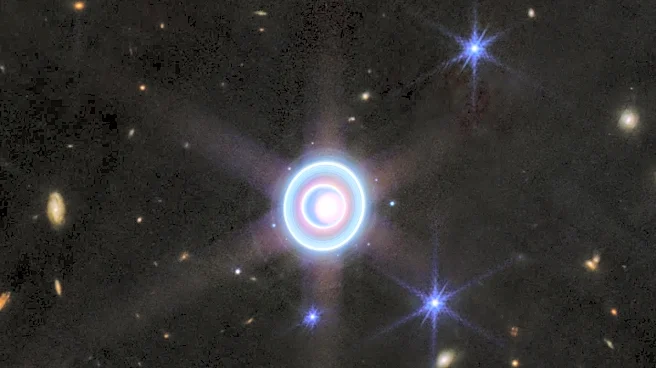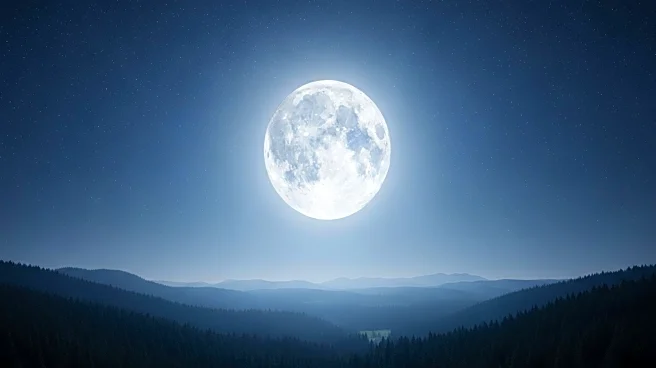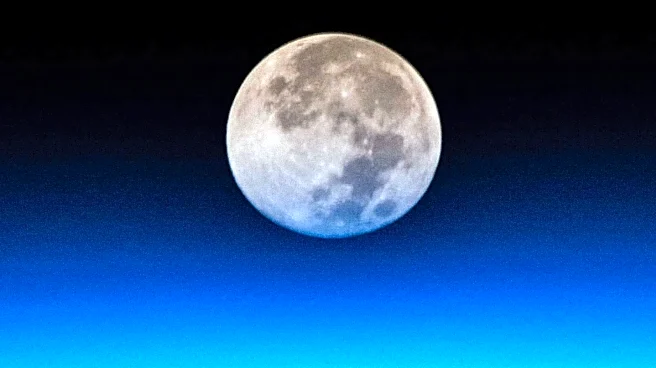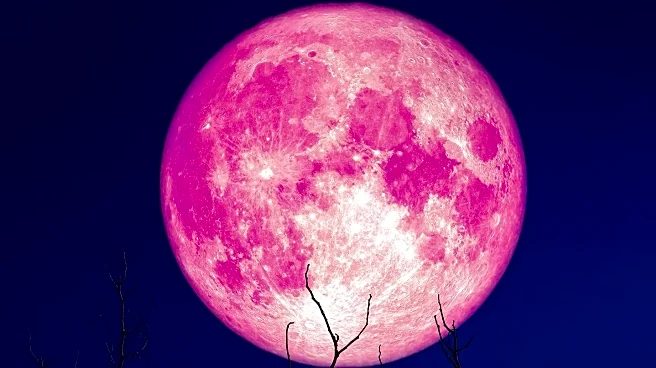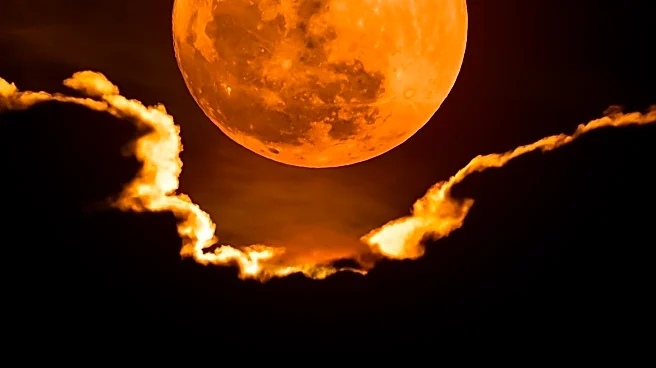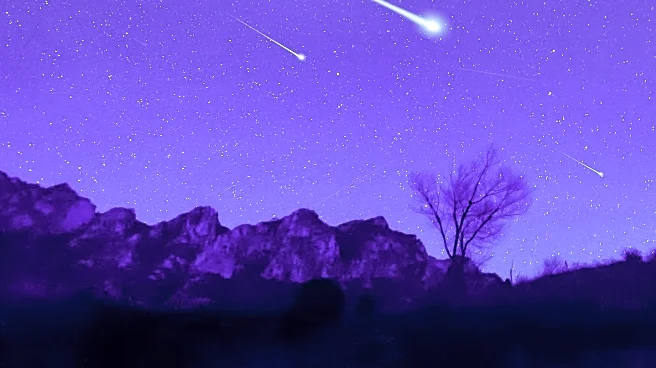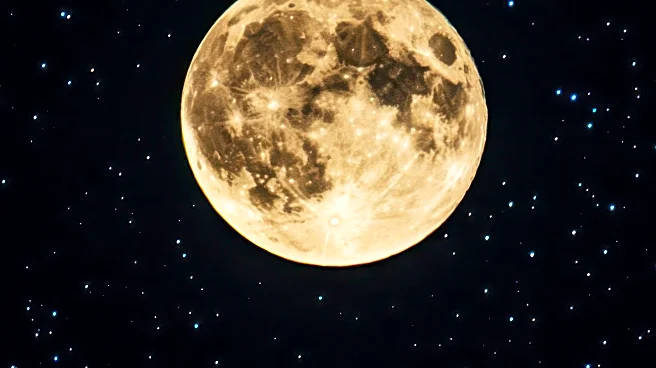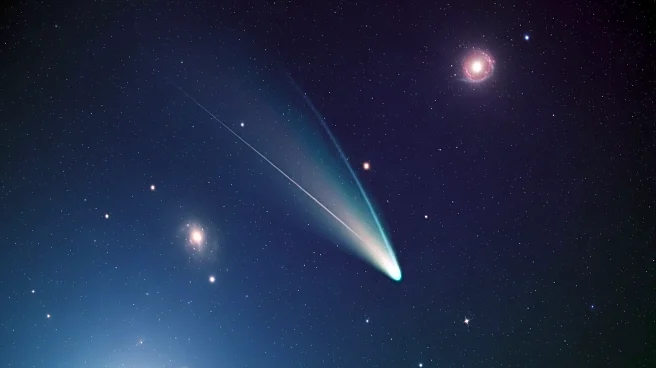What's Happening?
The night sky is set to dazzle with a rare celestial event as the Harvest Moon, the first of three supermoons this year, will appear alongside a bright Saturn. This supermoon, occurring when the moon is at its closest approach to Earth, will be about 222,989 miles away, making it appear 30 percent brighter and up to 14 percent larger than a typical full moon. The event will be visible on Monday night, with the moon rising around 5:55 p.m. and reaching peak illumination at 11:48 p.m. EDT. The clear skies forecasted for the night will provide optimal viewing conditions. Saturn will also be visible, appearing as a bright, yellowish star near the moon. This alignment offers a unique opportunity for stargazers to observe both celestial bodies in close proximity.
Why It's Important?
This celestial event is significant as it provides a rare opportunity for both amateur and professional astronomers to observe a supermoon and Saturn simultaneously. The increased brightness and size of the supermoon make it an ideal subject for photography and observation, while Saturn's visibility offers a chance to view one of the solar system's most iconic planets. Such events can inspire interest in astronomy and science, encouraging people to explore the night sky and learn more about celestial phenomena. Additionally, the Harvest Moon has cultural significance, historically aiding farmers with extra light for harvesting crops, and is celebrated in various traditions.
What's Next?
Following the Harvest Moon, two more supermoons are expected this year. The next, known as the Beaver Moon, will occur on November 5, followed by the Cold Moon on December 4. These consecutive supermoons provide ongoing opportunities for skywatchers to engage with astronomical events. As interest in such phenomena grows, educational institutions and observatories may host events to facilitate public engagement and learning. The continued visibility of Saturn during this period also allows for extended observation of the planet and its rings, particularly with the aid of telescopes.
Beyond the Headlines
The occurrence of supermoons and their visibility can have subtle impacts on cultural and scientific communities. They often serve as a reminder of the interconnectedness of natural cycles and human activities, such as agriculture. The increased public interest in these events can lead to greater support for scientific research and education, fostering a deeper appreciation for the natural world. Furthermore, the cultural narratives surrounding the Harvest Moon and similar events can enrich community traditions and storytelling.


